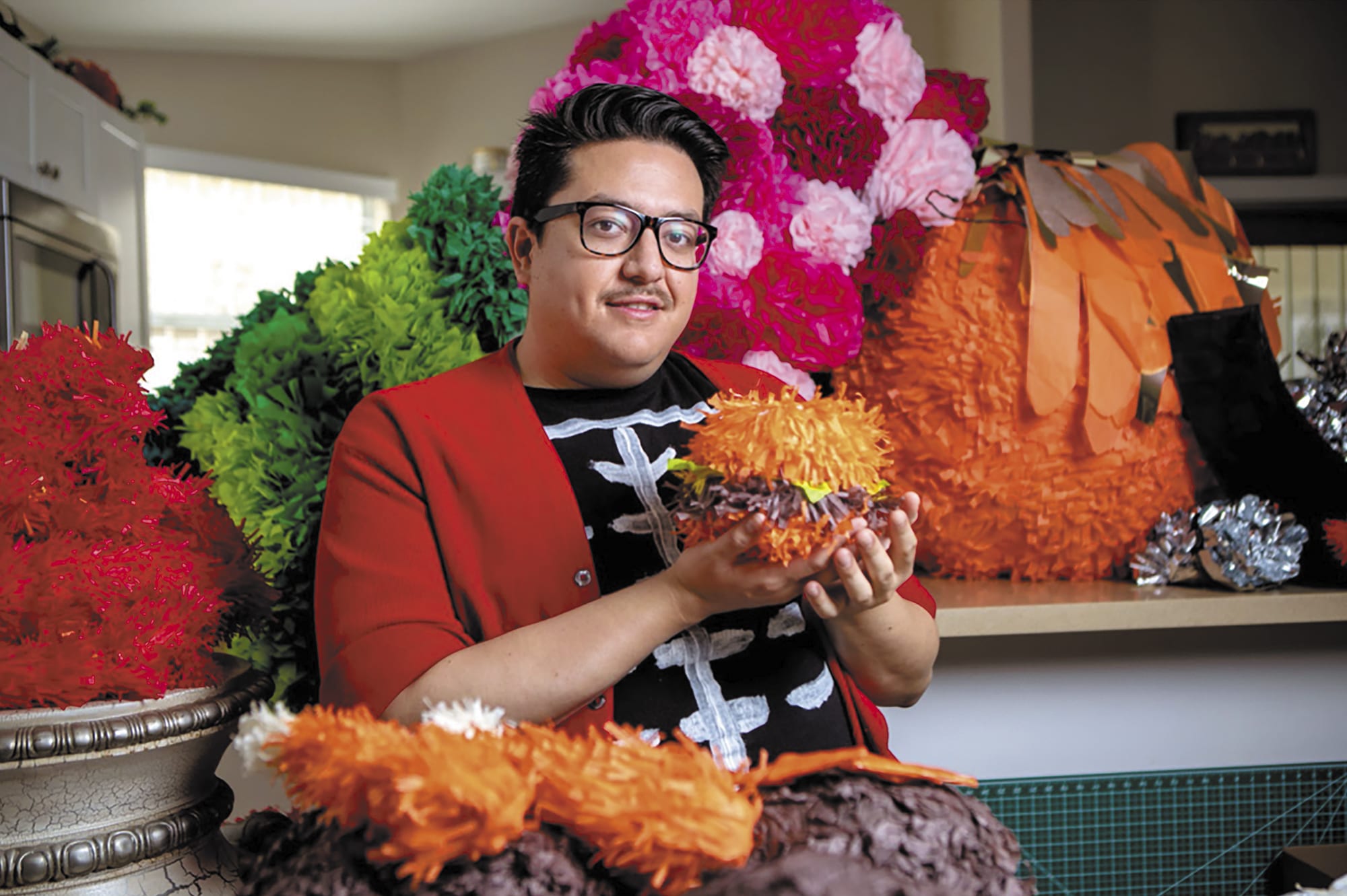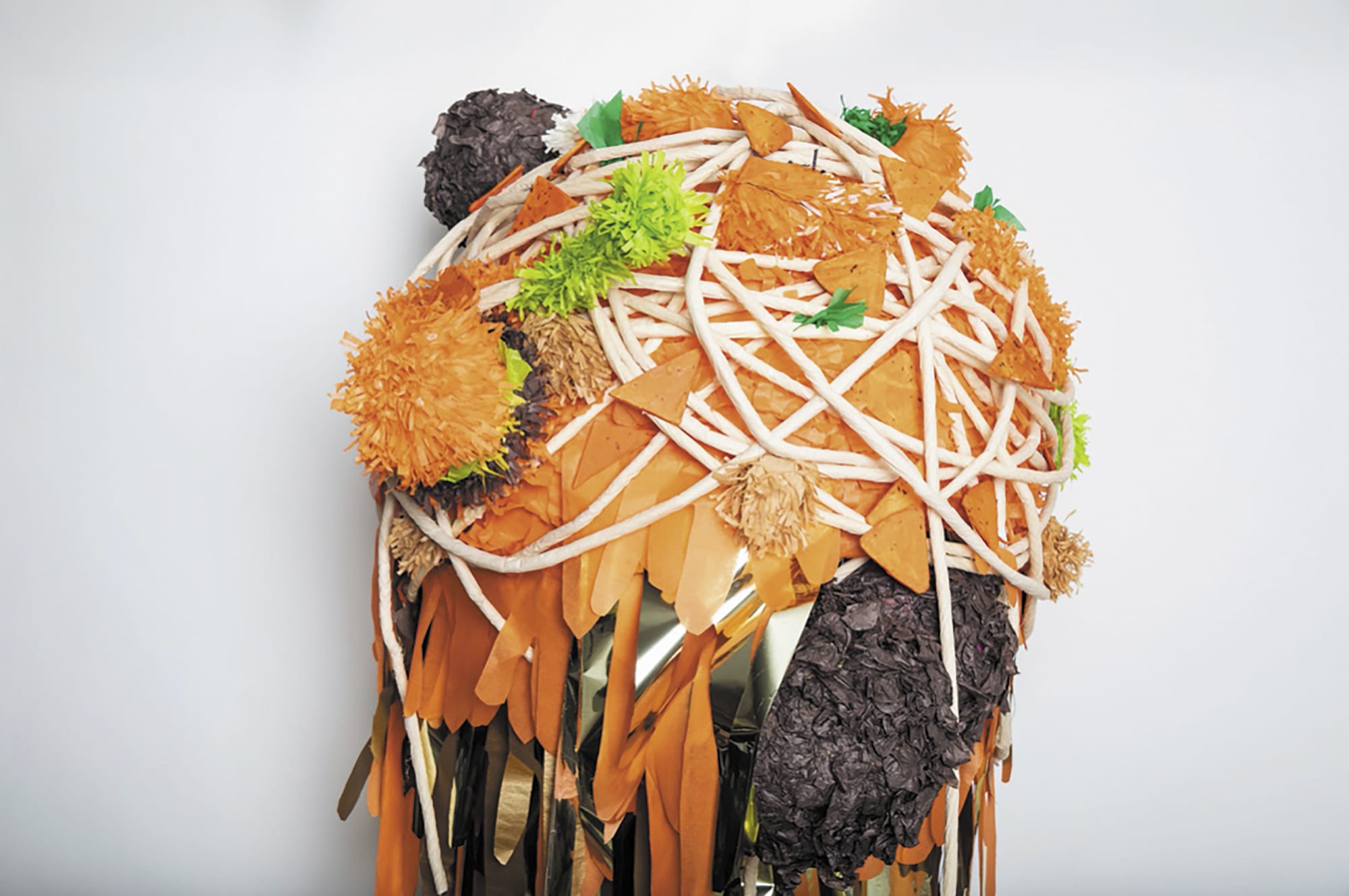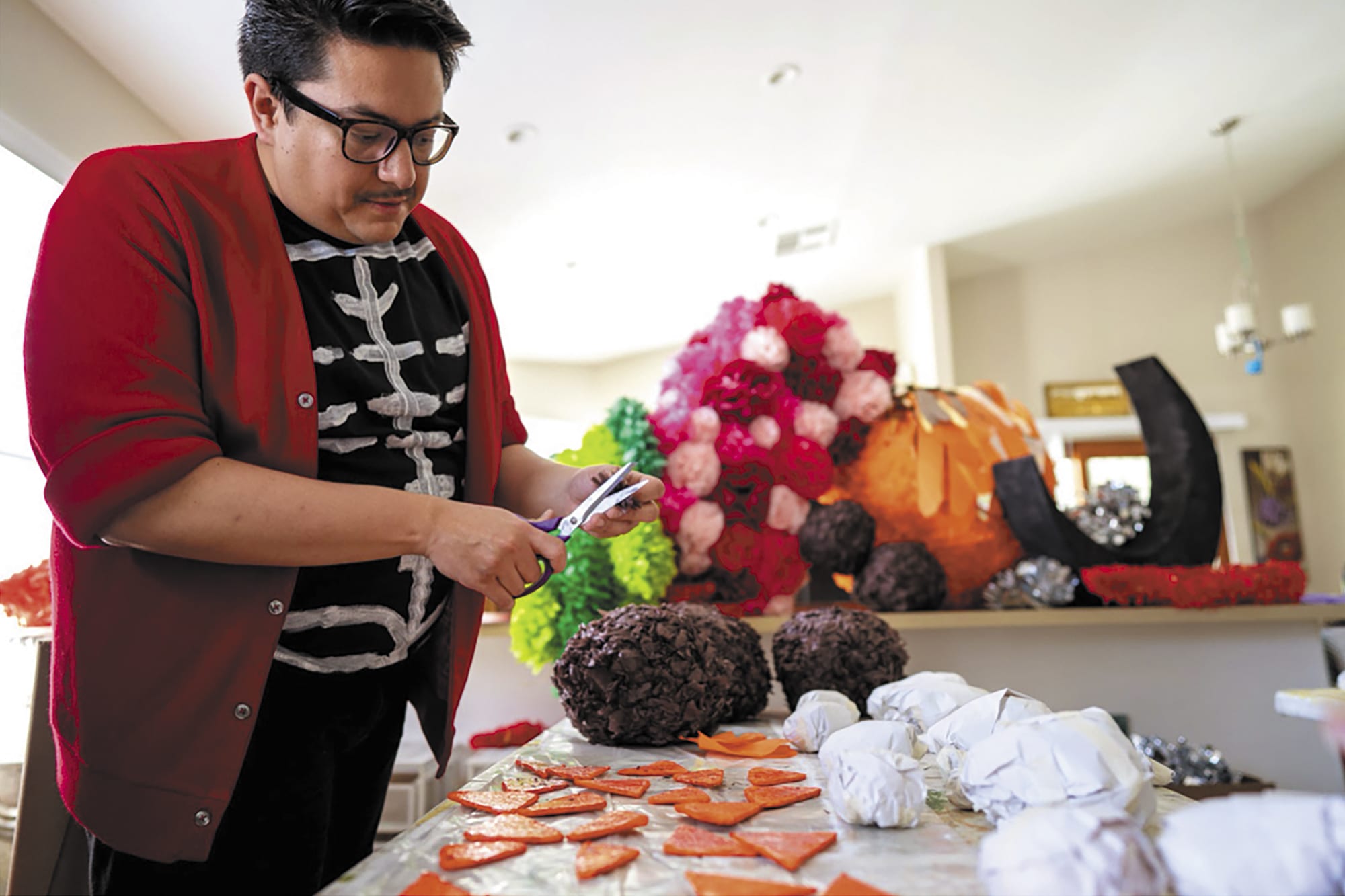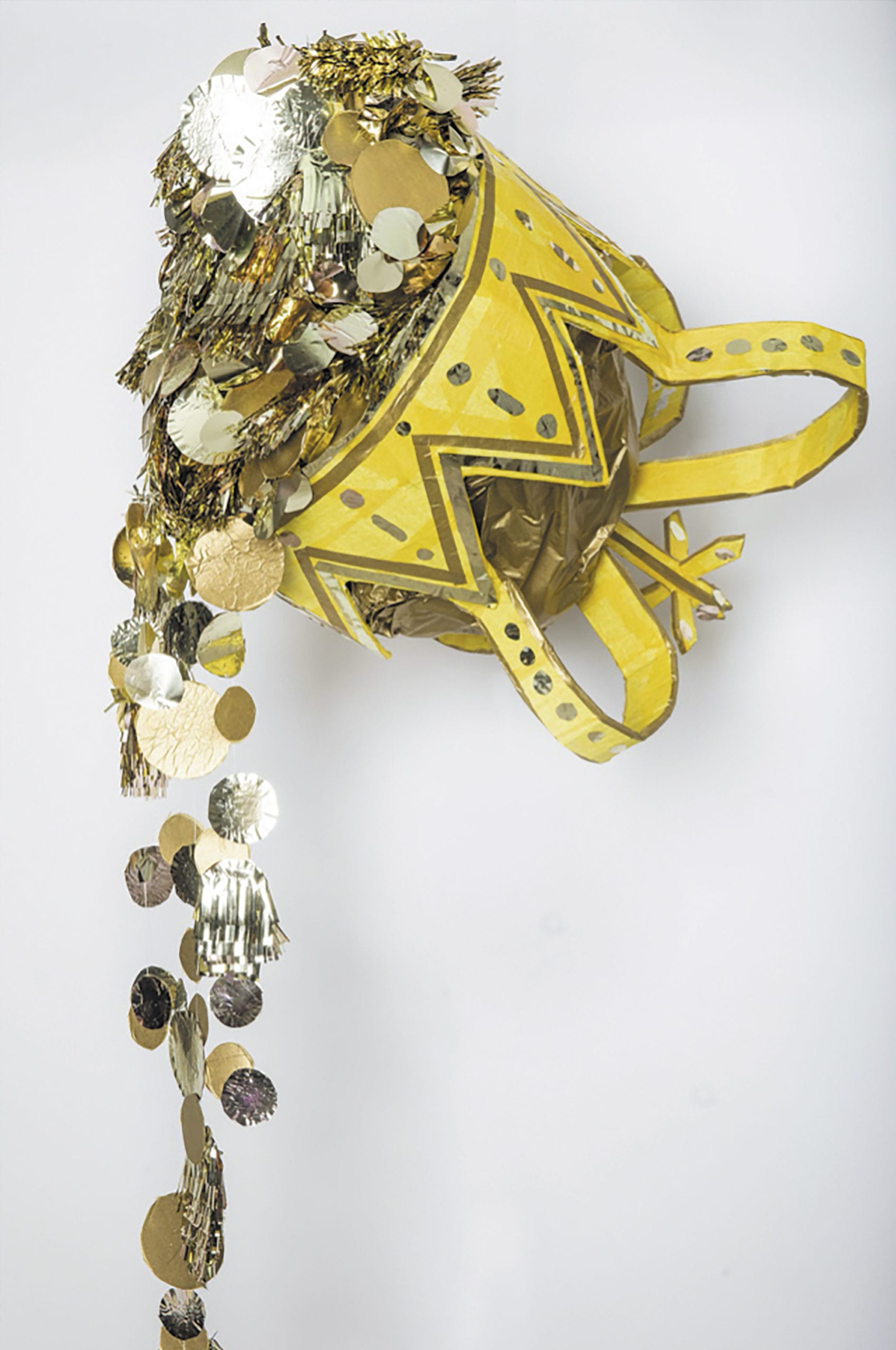
JUSTIN FAVELA: TISSUE WITH A BACKBONE
The Las Vegas Local Created Intricate Piñatas for Meow Wolf Las Vegas’ Omega Mart Representing the Seven Deadly Sins
By Dave Jasmon
“I feel like for a long time I was the token Latino in a lot of art shows.” says artist Justin Favela.
Born and raised in Las Vegas, Favela has seen the local art scene develop from a scrappy, grassroots culture to one that has endured a recession and — more recently — inspired businesses to invest in public art. However, despite large corporations like The Bellagio investing in blue chip art, many artists still face an uphill battle not unlike the one the entire country has put on full display in 2020. It’s a capital “P” Problem of representation, which means the grassroots hustle show must go on.
It’s no surprise, then, to see that Favela identifies with and chooses to use the scrap-iest of mediums for much of his art: The piñata. Like his latest major project, Puente Nuevo!, which was displayed at the Amon Carter Museum of American Art in Fort Worth, Texas, Favela’s contribution to Meow Wolf Las Vegas’ Omega Mart relies heavily on tissue paper and glue.
“I’ve always wanted to do piñatas that were a little bit more intricate,” he says. “I thought this would be a fun opportunity to do that. I’m basing the designs on the seven deadly sins. It’s actually going to be seven piñatas, and each of them represents one of the cardinal sins. For example, gluttony is a big meatball wrapped in spaghetti with Doritos.”

An artist who uses pop culture and accessibility to make commentary on institutional hierarchies, Favela seems to be an ideal representative of Vegas for this moment in time, one which walks a tightrope between commercialism and a small city’s commitment to supporting local culture. While he recognizes the difficulties of making a living as an artist, Favela wants to use his platform to speak out for marginalized communities.
He explains, “I feel like for many years I’ve been afraid to speak openly about issues like this. I could be doing more, but I know that there’s a limit. I also recognize that there’s a lot of people, like myself, that wish we could do more or wish we could say more. Again, we have to protect ourselves. At the end of the day, we have to pay our rent. We have to strategically say what we want to say.”
With more Las Vegas-based organizations and businesses investing in art and artists, Favela feels that it’s more important than ever to engage in conversations about representation, systemic racism, and the prevalence of whiteness in commercial art.
He says, “Sometimes, even though the intentions are good, it’s not good enough. Even though major institutions shine some light on a marginalized community every 10 years, that’s still a white institution. It’s not really changing anything.”

Acknowledging the elephant in the room (over the phone, of course), Favela — friendly, open, and articulate — discusses his collaboration with Meow Wolf, who has faced criticism for a lack of representation on some projects, like Santa Fe’s House of Eternal Return.
“Institutions are really reckoning with white supremacy and how they’ve been blind to it. I feel like Meow Wolf is really reckoning with that. I think they’re really reflecting and trying to do better in the future, which I think is really important, and a lot of institutions can learn from that. It’s really great to build experiences for people to get lost and have fun and experience joy because that’s so important, but at the same time, as Meow Wolf, you have this huge platform to make a statement and take a stance and be innovators, not only with art and art installations, but socially in how you treat the people and how you tell the stories of the people that make these installations possible.”
He admits to having misgivings after watching the Meow Wolf documentary, Meow Wolf: Origin Story, and thinking, “There are no people of color in this entire documentary. This is insane … Like, you got a bowling alley. That shit just doesn’t happen to people of color.”
Despite this initial reaction, and in recognition of Meow Wolf’s efforts to diversify their collaborations for the Las Vegas location, Favela feels that it’s necessary to use his platform and growing opportunities to be more vocal about issues that are important to him.
“I don’t think people see my art as political because it’s piñatas and it’s colorful and made out of tissue paper and cardboard. I feel like a lot of people do have a hard time looking past that, which is fine. Art is subjective, but most of my work is inherently political … But, people see what they want to see. I think that this year has really shaken me up. I realize that I don’t want to be the artist that’s making art for white people. Something that really infuriates me is museums or organizations that claim to be about community — that’s their big thing — and when it comes down to it, it’s interesting to see what they consider community.”
As for Favela’s own art community, he’s effusive with his praise and eager to promote all of the good work being done.
He says, “There’s so many people already doing so many amazing things here in Las Vegas on a local level. It makes me so proud to be from here and to be a part of the community. I really would love to support all of these people as much as I can. I’m really proud of the work that Fawn Douglas is doing. She’s a local hero to me already. Also, I’ve got to give it up to the Marjorie Barrick Museum at UNLV. I think, for the past few years, they’ve really been conscious of — Alisha Kerlin, the director there — of the lack of representation of not only people of color, but women and the queer community, also.”

Whether it’s Favela’s art, his piñatas, or his efforts to lift the voices of the underserved communities in the art world, it’s clear that he has both a commitment and an uncanny ability to do more with what he has.
He says, “Vegas is still a town where you can come, and if you really work hard, you can make an impact and people will notice you.”
Check out Justin Favela’s installation at Omega Mart in 2021. You can hear his thoughts on his life as a Latino artist at LatinosWhoLunch.com and ArtPeoplePod.com.
Dave Jasmon is a writer and artist. Check out his work on Instagram.
Kate Russell is a photographer and artist. Her only salaried job was when she worked for a circus, and then Meow Wolf happened. Growing up in a town of 2000, with only 2 paved roads, she prefers not to eat vegetables that start with the letter A, can be compensated with fresh raspberries, and loves a good handstand. She tried to re-name herself Ace at age 6, though it didn’t stick. At one time, she was among the top 20 best female mogul skiers in the country, was a professional furniture maker, ran a marathon, without training for it, in under 4 hours, has jumped out of planes and off bridges, successfully, and can offer a good shoe shine, when needed.
